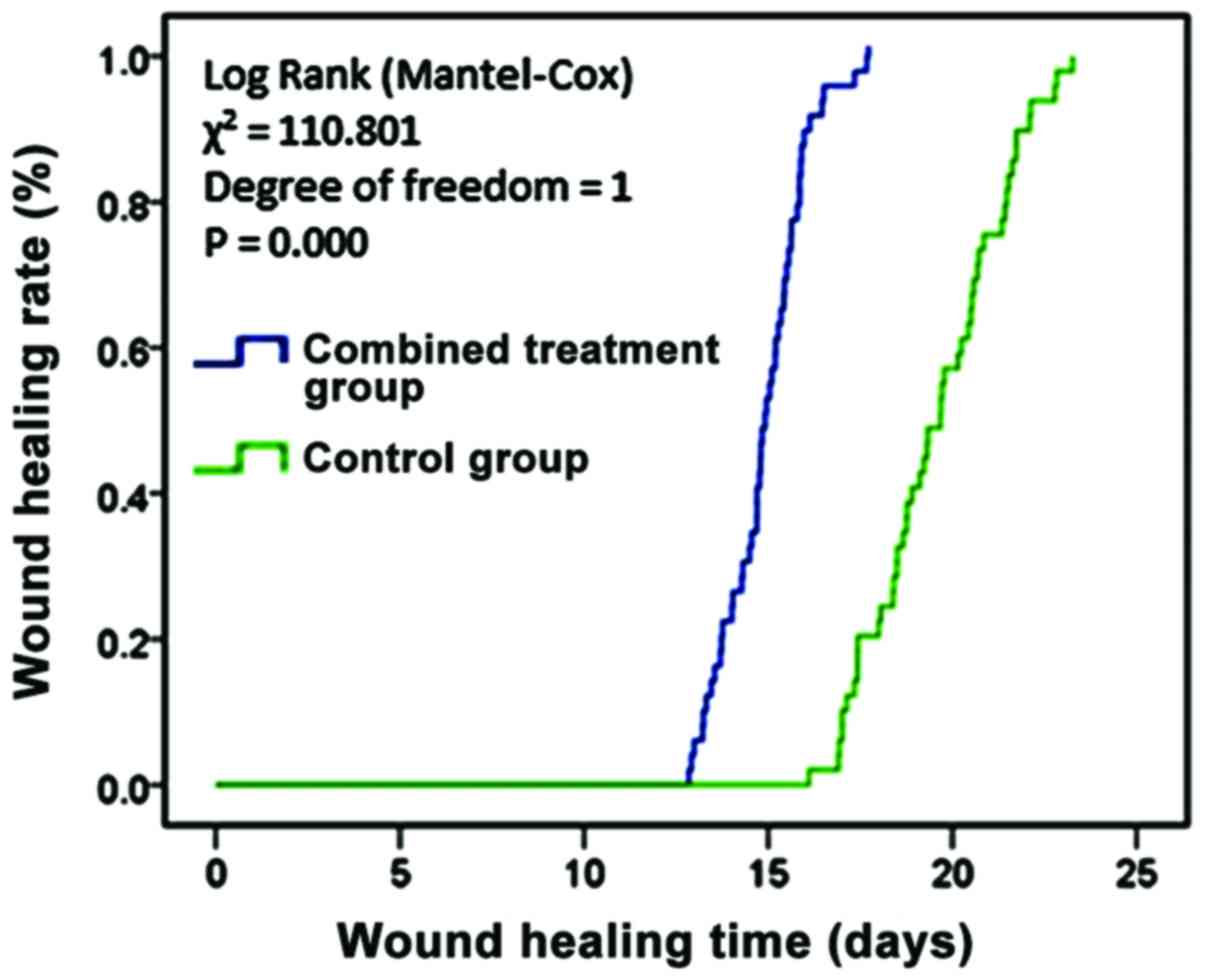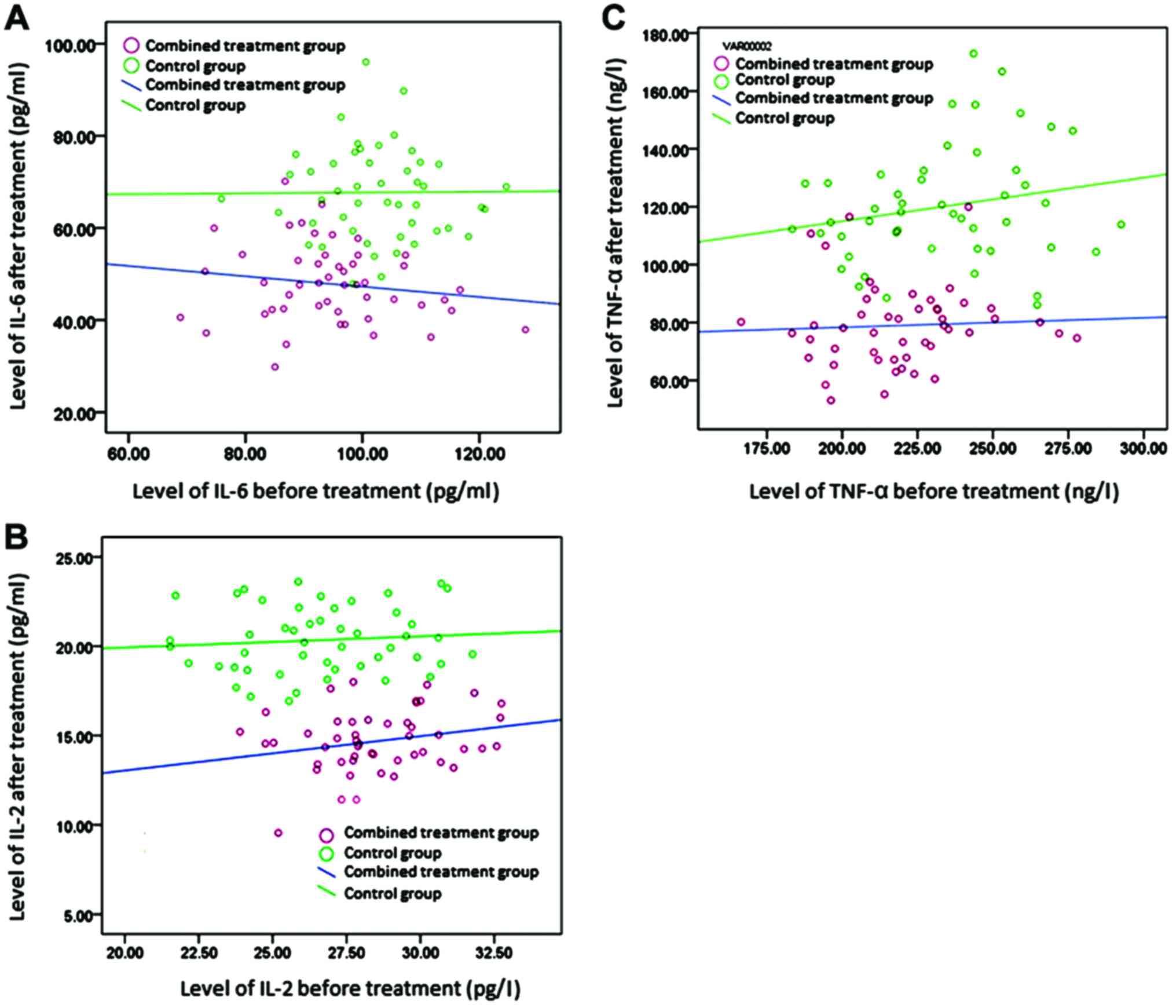|
1
|
Game FL, Attinger C, Hartemann A,
Hinchliffe RJ, Löndahl M, Price PE and Jeffcoate WJ: International
Working Group on the Diabetic Foot: IWGDF guidance on use of
interventions to enhance the healing of chronic ulcers of the foot
in diabetes. Diabetes Metab Res Rev. 32 Suppl 1:75–83. 2016.
View Article : Google Scholar : PubMed/NCBI
|
|
2
|
Kim H, Kong WH, Seong KY, Sung DK, Jeong
H, Kim JK, Yang SY and Hahn SK: Hyaluronate-epidermal growth factor
conjugate for skin wound healing and regeneration.
Biomacromolecules. 17:3694–3705. 2016. View Article : Google Scholar : PubMed/NCBI
|
|
3
|
Suh H, Lee AY, Park EJ and Hong JP:
Negative pressure wound therapy on closed surgical wounds with dead
space: Animal study using a swine model. Ann Plast Surg.
76:717–722. 2016. View Article : Google Scholar : PubMed/NCBI
|
|
4
|
Poon H, Le Cocq H, Mountain AJ and
Sargeant ID: Dermal fenestration with negative pressure wound
therapy: A technique for managing soft tissue injuries associated
with high-energy complex foot fractures. J Foot Ankle Surg.
55:161–165. 2016. View Article : Google Scholar : PubMed/NCBI
|
|
5
|
Memon AA, Sundquist K, Ahmad A, Wang X,
Hedelius A and Sundquist J: Role of IL-8, CRP and epidermal growth
factor in depression and anxiety patients treated with
mindfulness-based therapy or cognitive behavioral therapy in
primary health care. Psychiatry Res. 254:311–316. 2017. View Article : Google Scholar : PubMed/NCBI
|
|
6
|
Guo XF, Zhu XF, Cao HY, Zhong GS, Li L,
Deng BG, Chen P, Wang PZ, Miao QF and Zhen YS: A bispecific
enediyne-energized fusion protein targeting both epidermal growth
factor receptor and insulin-like growth factor 1 receptor showing
enhanced antitumor efficacy against non-small cell lung cancer.
Oncotarget. 8:27286–27299. 2017.PubMed/NCBI
|
|
7
|
Gomez-Villa R, Aguilar-Rebolledo F,
Lozano-Platonoff A, Teran-Soto JM, Fabian-Victoriano MR,
Kresch-Tronik NS, Garrido-Espíndola X, Garcia-Solis A,
Bondani-Guasti A, Bierzwinsky-Sneider G, et al: Efficacy of
intralesional recombinant human epidermal growth factor in diabetic
foot ulcers in Mexican patients: A randomized double-blinded
controlled trial. Wound Repair Regen. 22:497–503. 2014. View Article : Google Scholar : PubMed/NCBI
|
|
8
|
Singla S, Garg R, Kumar A and Gill C:
Efficacy of topical application of beta urogastrone (recombinant
human epidermal growth factor) in Wagner's Grade 1 and 2 diabetic
foot ulcers: Comparative analysis of 50 patients. J Nat Sci Biol
Med. 5:273–277. 2014. View Article : Google Scholar : PubMed/NCBI
|
|
9
|
Wu W, Zeng LN, Peng YY, Lu XH, Li CY and
Wang ZC: The effects of recombinant human epithelialgrowth factor
and protein-free calf blood extract for recovery of corneal
mechanical epithelial defects healing and neovascularization. Eur
Rev Med Pharmacol Sci. 18:3406–3411. 2014.PubMed/NCBI
|
|
10
|
Shin JU, Kang SW, Jeong JJ, Nam KH, Chung
WY and Lee JH: Effect of recombinant human epidermal growth factor
on cutaneous scar quality in thyroidectomy patients. J Dermatolog
Treat. 26:159–164. 2015. View Article : Google Scholar : PubMed/NCBI
|
|
11
|
Ojalvo AG, Acosta JB, Marí YM, Mayola MF,
Pérez CV, Gutiérrez WS, Marichal II, Seijas EÁ, Kautzman AM,
Pacheco AE, et al: Healing enhancement of diabetic wounds by
locally infiltrated epidermal growth factor is associated with
systemic oxidative stress reduction. Int Wound J. 14:214–225. 2017.
View Article : Google Scholar : PubMed/NCBI
|
|
12
|
Yang F, Shi B and Cao L: Effect of vacuum
sealing drainage on the expression of VEGF and miRNA-17-5p in
seawater-immersed blast-injury wounds. Exp Ther Med. 13:1081–1086.
2017. View Article : Google Scholar : PubMed/NCBI
|
|
13
|
Braun LR, Fisk WA, Lev-Tov H, Kirsner RS
and Isseroff RR: Diabetic foot ulcer: An evidence-based treatment
update. Am J Clin Dermatol. 15:267–281. 2014. View Article : Google Scholar : PubMed/NCBI
|
|
14
|
Ertugrul BM, Lipsky BA and Guvenc U;
Turkish Intralesional Epidermal Growth Factor Study Group for
Diabetic Foot Wounds, : An assessment of intralesional epidermal
growth factor for treating diabetic foot wounds the first
experiences in Turkey. J Am Podiatr Med Assoc. 107:17–29. 2017.
View Article : Google Scholar : PubMed/NCBI
|
|
15
|
Cheng HT, Hsu YC and Wu CI: Efficacy and
safety of negative pressure wound therapy for Szilagyi grade III
peripheral vascular graft infection. Interact Cardiovasc Thorac
Surg. 19:1048–1052. 2014. View Article : Google Scholar : PubMed/NCBI
|
|
16
|
Novak A, Khan WS and Palmer J: The
evidence-based principles of negative pressure wound therapy in
trauma and orthopedics. Open Orthop J. 8:168–177. 2014. View Article : Google Scholar : PubMed/NCBI
|
|
17
|
Xing B, Wu F, Li T, Qi S, Xie J and Ye Z:
Experimental study of comparing rhEGF with rhβFGF on improving the
quality of wound healing. Int J Clin Exp Med. 6:655–661.
2013.PubMed/NCBI
|
|
18
|
Dumantepe M, Fazliogullari O, Seren M,
Uyar I and Basar F: Efficacy of intralesional recombinant human
epidermal growth factor in chronic diabetic foot ulcers. Growth
Factors. 33:128–132. 2015. View Article : Google Scholar : PubMed/NCBI
|
|
19
|
Gainza G, Aguirre JJ, Pedraz JL, Hernández
RM and Igartua M: rhEGF-loaded PLGA-Alginate microspheres enhance
the healing of full-thickness excisional wounds in diabetised
Wistar rats. Eur J Pharm Sci. 50:243–252. 2013. View Article : Google Scholar : PubMed/NCBI
|
|
20
|
Nasole E, Nicoletti C, Yang ZJ, Girelli A,
Rubini A, Giuffreda F, Di Tano A, Camporesi E and Bosco G: Effects
of alpha lipoic acid and its R+ enantiomer supplemented to
hyperbaric oxygen therapy on interleukin-6, TNF-α and EGF
production in chronic leg wound healing. J Enzyme Inhib Med Chem.
29:297–302. 2014. View Article : Google Scholar : PubMed/NCBI
|
|
21
|
Rozenblum N, Zeira E, Bulvik B, Gourevitch
S, Yotvat H, Galun E and Goldberg SN: Radiofrequency ablation:
inflammatory changes in the periablative zone can induce global
organ effects, including liver regeneration. Radiology.
276:416–425. 2015. View Article : Google Scholar : PubMed/NCBI
|
|
22
|
Okada Y, Shirai K, Reinach PS,
Kitano-Izutani A, Miyajima M, Flanders KC, Jester JV, Tominaga M
and Saika S: TRPA1 is required for TGF-β signaling and its loss
blocks inflammatory fibrosis in mouse corneal stroma. Lab Invest.
94:1030–1041. 2014. View Article : Google Scholar : PubMed/NCBI
|
















